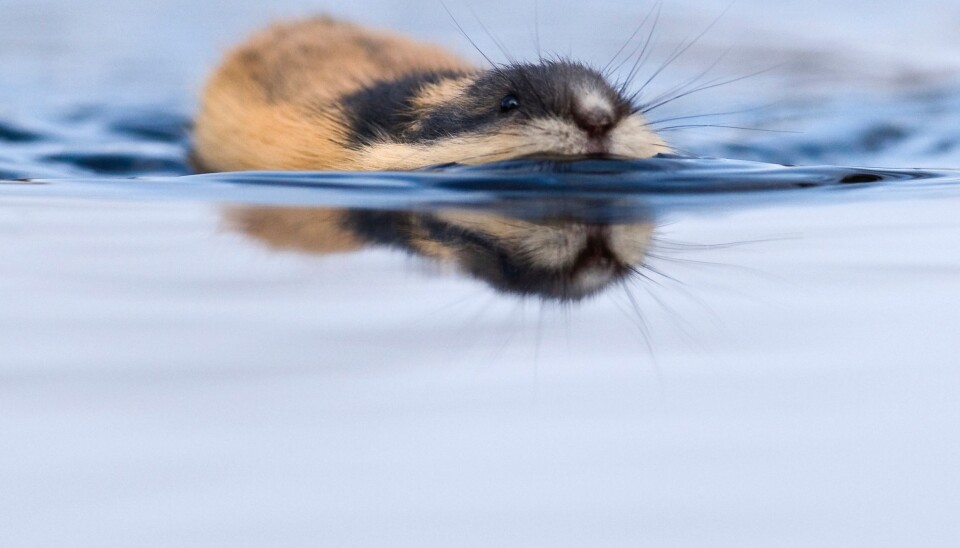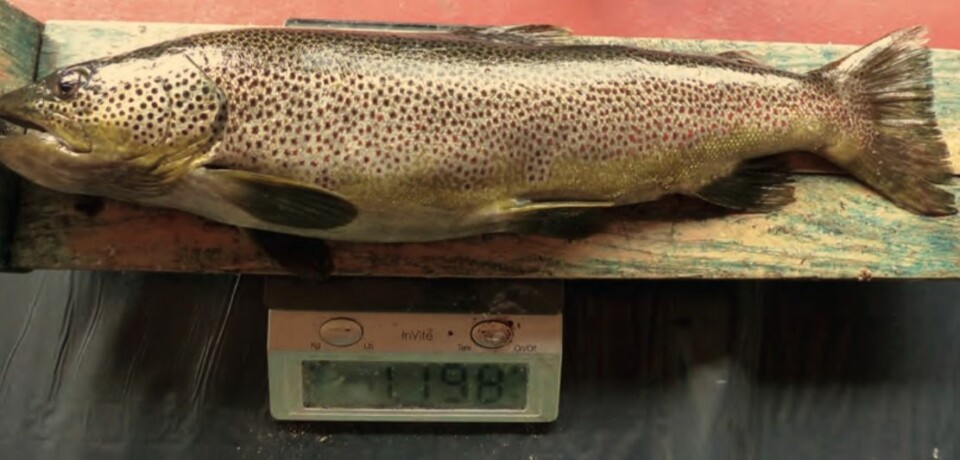
Trout may be dining on lots of lemmings
You see a lemming swimming on the surface of the water. Then it disappears. What happened?
Lemmings that are swimming along and then – poof! - are simply gone, have long been a mystery. Generations of Norwegians have speculated on the phenomenon.
Some people have even witnessed the sudden disappearance of a lemming as it swam.
“I'm not the first person to describe this,” says Reidar Borgstrøm. “But I’ve never come across a scientific article about the phenomenon by anyone else,” says the naturalist and professor emeritus at the Norwegian University of Life Sciences (NMBU) in Ås.
Maybe he’s solved the mystery.
A lake in home of the giants
Last summer, a group of master's students from NMBU’s Department of Nature Management joined Borgstrøm at a cabin on the Valdresflya plateau in the Jotunheimen mountains – which translates to “home of the giants.”
For years, students and researchers have been studying the trout in the small mountain lake called Øvre Heimdalsvatn. A few times they’ve found remains of what they think must be small rodents – like lemmings and mice – in the stomach of the fish.
This past summer, the Ås students and their professor worked more systematically, which turned into a research article in the Norwegian journal Naturen.
22% had eaten lemmings
Officially, trout live on insects, small crustaceans and small fish.
The research at Valdresflya last summer may indicate that the trout’s diet may be more varied than this – at least when the lemming and mouse populations are high.
While fishing in Øvre Heimdalsvatn in late August and early September 2018, the researcher and his students caught a total of 27 trout measuring between 36 and 48 centimetres.
Six of the fish (22 per cent) had consumed small rodents. Each of the six had feasted on a lemming, and one trout also had a tundra vole and a field vole in its stomach.

Can eat a lot of lemmings
“We assume from this finding that small rodents may constitute a sizable portion of terrestrial nutrition for the trout population here in years when the abundance of small rodents is high,” says Borgstrøm.
The trout in Øvre Heimdalsvatn are not heavily fished. The retired but still active researcher estimates that a relatively large percentage of the trout in the lake are more than ten years old, with some up to twenty years old. Many of the fish in the mountain lake are more than 40 centimetres and a few are over 50 centimetres.
In 2017, Borgstrøm estimated that the number of trout over 36 centimetres in Øvre Heimdalsvatn was around 1200.
“This means that almost 300 large trout in the lake may have enjoyed a small rodent meal in early September 2018. If the trout ate just as many small rodents earlier in the summer and continued consuming them into the fall, that adds up to a lot of lemmings.
"And these conditions are probably similar in all the mountain lakes where there are large trout," says Borgstrøm, adding that people have also found small rodents in the stomachs of large char.
Want to find answers
Small rodent populations in the mountains vary widely.
Biologists don’t agree on what causes the big fluctuations. When asked in 2015 why we have mouse years and lemming years, Norwegian biologists’ answers pointed in different directions.
But one thing that’s certain is that when lemming years come around every three to five years, the food supply for birds of prey, owls, foxes and weasels goes way up. Thus, the populations of these animals can grow sharply. Then they go down again in subsequent years.
“In the summer of 2018, there were a good deal of lemmings in the mountains and we saw lemmings swimming on Øvre Heimdalsvatn in early July. In September, we were still seeing dead lemmings floating on the water. This suggests that lemmings were available for large trout over a long period of time,” Borgstrøm says.
He wonders if the mountain trout's consumption of small rodents is actually so substantial that it has a bearing on the stock of large trout and perhaps also Arctic char. Do fish numbers and size grow in lemming years, like with other predators?
Borgstrøm believes it must be possible to determine this.
He and his colleagues want to conduct an annual collection of large trout from Øvre Heimdalsvatn to see if the population fluctuates in sync with the lemming population.m
Researchers have been using Øvre Heimdalsvatn on Valdresflya for their studies for 60 years. The lake has been a gold mine for scientists who want to measure changes in nature over time.
Reference:
Reidar Borgstrøm: «Smågnagarar kan vera viktig aurenæring» (Small rodents may be important for trout nutrition), Naturen 2-2019.
———
Read the Norwegian version of this story on Forskning.no































